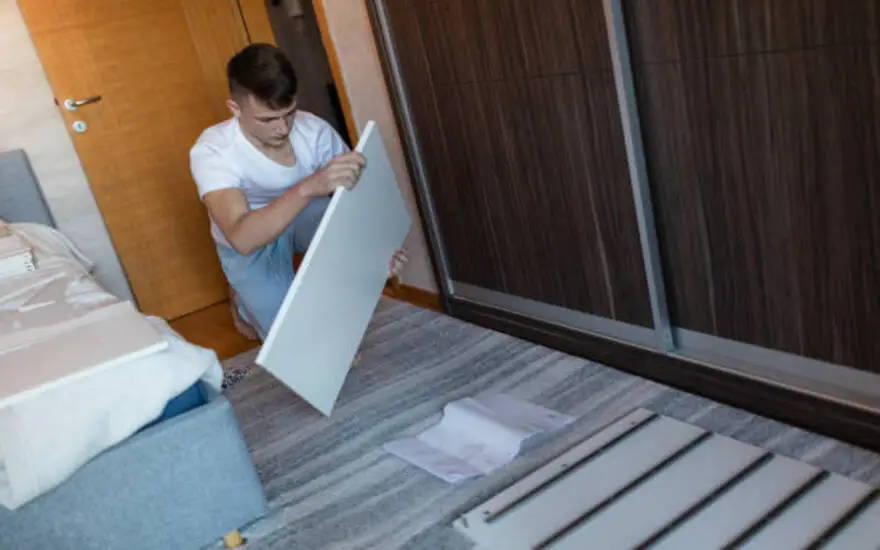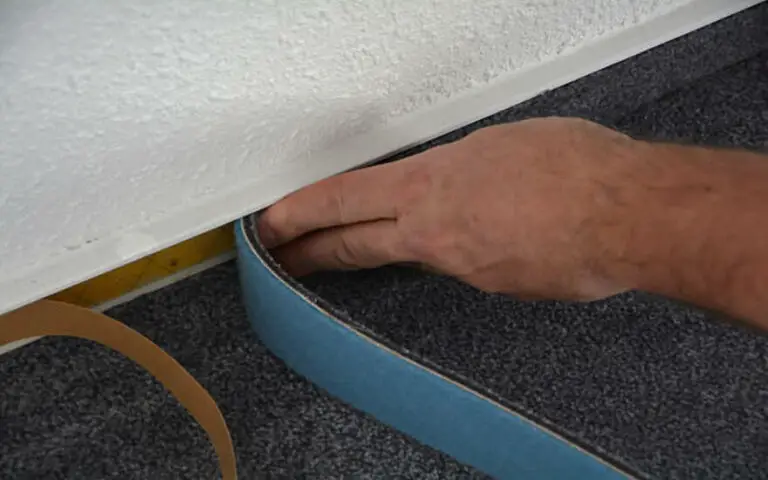Good news – the answer is yes! I will explain why, what kind of carpet and padding is best, and how to ensure your refrigerator stays in place. Read on for tips for safely placing a fridge on a carpeted floor.

Can You Put A Fridge On the Carpet?
Although putting a fridge right on top of your carpet flooring is not recommended due to the potential damage it could cause, there are a few circumstances in which it might be possible. If you must place your refrigerator on a carpet, here are a few tips to keep in mind.
First, ensure the refrigerator is level and check the manufacturer’s instructions for safety. Choose an area with good ventilation and use furniture sliders to move the refrigerator around. Place a protective layer on the carpet and ensure that the floor can handle the weight of the fridge.
Place non-slip mats under the refrigerator to protect it from slipping and check for any plumbing or wiring considerations. Lastly, check for any manufacturer’s warranty implications and have a professional help you if needed.
These steps can help keep your refrigerator safe and secure on carpeted floors.
10 Tips For Placing a Refrigerator On Carpeted Floors
When placing a refrigerator on a carpeted floor, there are several tips you should follow. Firstly, make sure the refrigerator is sitting level on the carpet, as an uneven surface can cause problems with operation.
1. Make sure the refrigerator is level
It is very important to ensure that any refrigerator on a carpeted floor is level. If it is not level, it could cause the refrigerator to tilt, leading to imbalance and damaging the refrigerator and the floor.
You can use a spirit level or bubble level to ensure that your refrigerator is level. You should also check the manufacturer’s instructions to get the fridge’s correct positioning. Additionally, using furniture sliders can help make moving the refrigerator easier. Placing a protective layer on the carpet can also help protect it from any spills.
2. Check the manufacturer’s instructions
Before you place your fridge on a carpeted floor, it’s important to check the manufacturer’s instructions. Depending on the model and size of your refrigerator, there may be specific guidelines you must follow.
For example, some fridges require extra ventilation and must be placed at least four inches away from walls or other surfaces. Additionally, it’s important to ensure that your chosen spot is level and can handle the weight of the refrigerator. These steps will help ensure that your fridge runs efficiently and won’t cause any damage to your carpet.
3. Choose an area with good ventilation
When placing a refrigerator on a carpeted floor, it’s important to ensure that the area has good ventilation. This means you should avoid putting the fridge in a corner or against a wall, as this can block air circulation.
Instead, try to find a spot that allows enough space for air to flow freely. Additionally, ensure the floor can handle the weight of the fridge and that any plumbing or wiring considerations have been taken into account. Finally, check the manufacturer’s instructions and warranty implications before making any decisions.
4. Use furniture sliders to move the refrigerator
Moving a refrigerator on carpeted floors can be tricky, especially if it is a heavy appliance. Furniture sliders make it much easier to move the refrigerator short distances with little or no help.
Just place the furniture sliders under each corner of the refrigerator and gently lift and slide it in the desired direction. Check the manufacturer’s instructions for any weight limits on the furniture sliders.
It is also important to ensure that the sliders are securely attached to the refrigerator before moving them. With furniture sliders, you can easily and safely move your refrigerator on carpeted floors without worrying about damaging your floors or appliance.
5. Place a protective layer on the carpet
To ensure your carpet is protected, it’s also a good idea to place a protective layer underneath the refrigerator. This could be a plastic mat or a durable rug. Doing so will help prevent any potential damage from happening to the carpet and will also help to reduce noise and vibration when the refrigerator is running.
Additionally, you may want to use furniture sliders to move the refrigerator around. This is especially important if you have a heavy refrigerator, as it can cause indentations in your carpet if it isn’t moved properly.
6. Ensure the floor can handle the weight of the refrigerator
It’s important to ensure that your floor can handle the weight of your refrigerator before placing it on the carpet. Before you make a move, it’s best to check with the manufacturer’s instructions to see what weight capacity they recommend.
If you’re unsure, it’s best to err on the side of caution and have a professional help you. Additionally, use furniture sliders or hard plastic to move the refrigerator so that you don’t put too much pressure on the carpeting or flooring beneath it. By taking these precautions, you can ensure that your refrigerator is secure and safe while protecting your carpet from any potential damage.
7. Place non-slip mats under the refrigerator
To ensure your refrigerator remains in place, you should place non-slip mats underneath it. Doing this will help reduce the chances of the refrigerator shifting if there is any movement or vibration. This is especially important if your home has hardwood floors or tiles.
Non-slip mats come in various materials and sizes, so you can easily find one to fit your needs. If you have a large refrigerator, it would be best to invest in a few mats to better spread the weight. Additionally, washing these mats and line drying them once a week will help extend their life span.
8. Check for any plumbing or wiring considerations
Before placing your refrigerator on the carpet, checking for any plumbing or wiring considerations is important. You should ensure that the refrigerator is not too close to any plumbing lines, electrical outlets, or other wiring, as this can cause problems with your refrigerator’s performance and safety.
Additionally, suppose your refrigerator is located in a basement or other area with a high water table. In that case, you may need to invest in an additional layer of protection for your carpet.
9. Check for any manufacturer’s warranty implications
Before placing your refrigerator on a carpeted floor, it’s important to check for any manufacturer’s warranty implications. Depending on the type of refrigerator you have and the type of carpet you use, the warranty may be voided if you place the appliance directly on the carpet.
Therefore, it is essential to read through the manufacturer’s instructions and warranties carefully to ensure that your refrigerator is still covered if you place it on a carpeted floor. Additionally, you should always ask a professional for help if you have questions or concerns about properly installing your refrigerator.
10. Have a professional help you if needed
If you’re still unsure about placing a refrigerator on your carpeted floor, it’s always a good idea to have a professional help you out. They know the ins and outs of the appliance, so they can check for any potential problems and ensure the refrigerator is properly installed.
With their expertise and knowledge, they will be able to advise you on the best course of action to ensure your refrigerator is safe and secure on your carpeted floor. Plus, they often offer services such as installation or repairs, so you can rest assured that your refrigerator is being taken care of properly.
Summary
In conclusion, it is not advised to place a refrigerator on carpeted floors as it can damage both the refrigerator and the flooring. To ensure your refrigerator is safe and secure, use furniture sliders to move it and ensure the area has good ventilation. Place a protective layer on the carpet and non-slip mats under the refrigerator for added safety. Before you begin, check for any plumbing or wiring considerations, warranty implications, and manufacturer’s instructions. If you’re still unsure, it is best to consult a professional for help.






